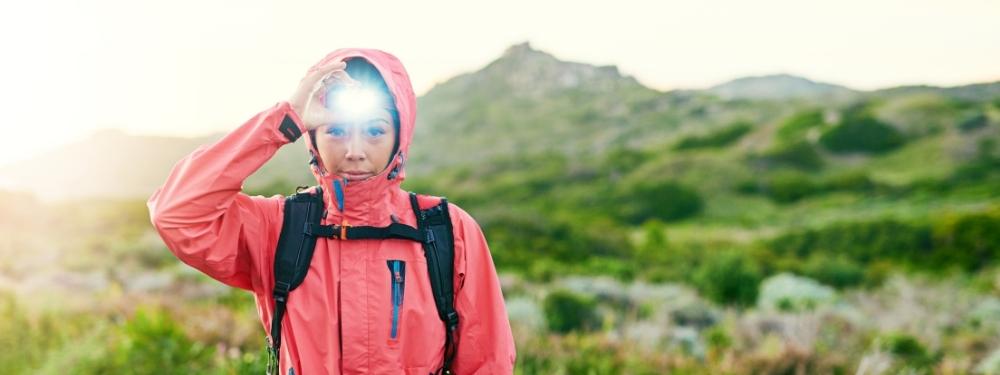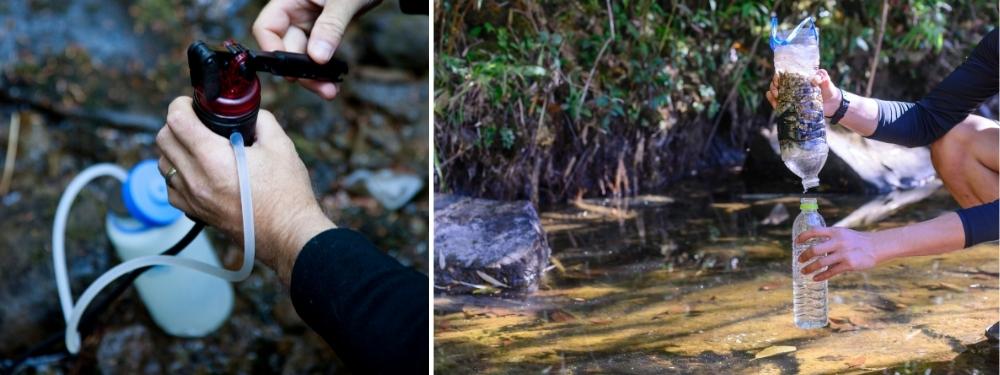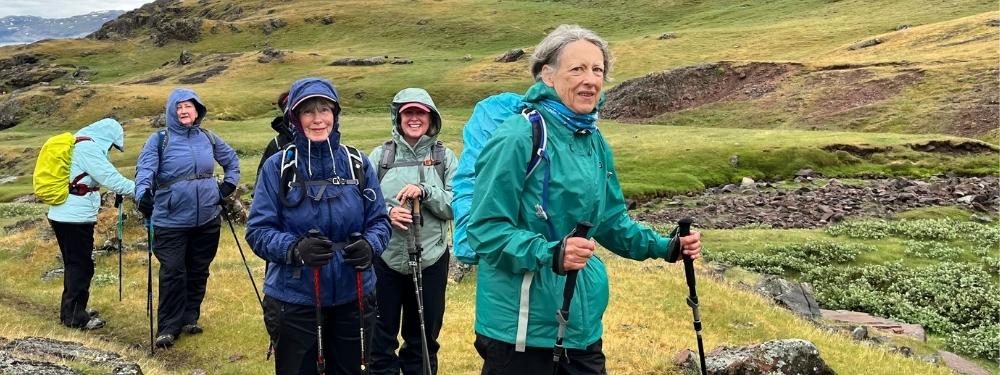
If you’ve taken a long hike, you’ve probably heard the term “the Ten Essentials.” The term dates back to the 1930s when The Mountaineers first used it to describe a safety and packing system taught in mountaineering courses. The Ten Essentials gained popularity with outdoor enthusiasts when it was first published in the 1974 edition of the iconic text, “Mountaineering: The Freedom of the Hills.”
The list of essential systems needed for safe travel in the backcountry has changed slightly over the years. The items you bring should also change depending on the location of your hike, the time of year, and the forecasted weather. Selecting appropriate gear for each hike is an important part of the trip-planning process. Careful consideration of what to carry can help you stay safe and comfortable while on the trail.
Listed below are the essential items, as published in Mountaineering: The Freedom of the Hills, 9th Edition, that all hikers and backpackers should consider packing before hitting the trail. We’ve also included some AGC staff recommendations for each category.
1. Navigation
Keeping yourself oriented is the best way to avoid becoming lost. A detailed map of the area and a quality compass are two of the most critical items to have in your backpack. An altimeter can also be a handy tool for navigating. Modern technologies are also available to help navigate the backcountry but should not replace a map and compass. Other navigation items hikers may want to consider packing include a GPS device and digital map, a personal locator beacon (PLB), and a satellite communicator.
AGC Recommendations:
- Suunto A-10 Compass
- Garmin inReach Mini2
- FarOut (formerly GutHooks)
- AllTrails
- CalTopo
- National Geographic Topo Maps
2. Headlamp
Headlamps protect against physical injury when traveling in the dark. They are also helpful for finding things in your backpack, cooking after dark, distant signaling, and leading the way on the trail. Look for a good-quality waterproof headlamp with at least 100 lumens. Bring extra batteries or choose a rechargeable headlamp—just be sure to charge it up between trips.
AGC Recommendations:
3. Sun Protection
Sunscreen, lip balm of at least SPF 30, and sunglasses with 100% UV protection are essential. Sunburns are one of the most common hiking injuries and one of the easiest to prevent. Sunglasses help prevent snow blindness when recreating in wintertime or in high alpine environments where snow persists in summer. Sun-protective clothing and sun hats can also be considered in this category.
AGC Recommendations:
- La Roche-Posay Anthelios Tinted Sunscreen SPF 50
- Sun Bum SPF 30 Sunscreen Lip Balm
- Mountain Hardwear Women's Crater Lake Long Sleeve Hoody
- Mountain Hardwear Women's Sunshadow Long Sleeve Hoody
- Tilley sun hat
4. First Aid Kit
A first aid kit usually contains items to treat cuts, abrasions, blisters, punctures, and burns. Additional items might address broken fingers, limbs, cardiac conditions, hypothermia, frostbite, insect bites, allergic reactions, burns, and other wounds. If applicable, include any personal medications. Insect repellent and foot care are included here. Some great pre-made first aid kits are available for hikers and backpackers to purchase. Always customize your first aid kit for your needs.
AGC Recommendations:
5. Knife/Repair Kit
A knife is another handy tool in the backcountry. It can be used for first aid, repairs, and food preparation. Look for small, lightweight, easy-to-use options.
AGC Recommendations:
- Victorinox Classic SD 7 Function Pocket Knife
- Kershaw Barricade (8650) Orange Multifunction Rescue Pocket Knife
6. Fire Starter
If you are camping along your hiking journey, carrying waterproof matches and a fire starter to light a fire is helpful in an emergency. Packing a lightweight camp stove, warm clothes, and a headlamp will decrease your chances of needing to build an emergency campfire.
AGC Recommendations:
- UST WetFire Tinder - Compact, lightweight, and starts easily.
7. Shelter
If backcountry hiking, a tent, tarp, or lightweight emergency bivvy can protect you and be life-saving when the unexpected happens. Many hikers carry lightweight shelters even on day trips, particularly hiking alone.
AGC Recommendations:
- Big Agnes Tiger Wall UL Ultralight Tent
- Zpacks Duplex Tent - lightweight and best for warm weather camping. Perfect as a 2-person tent or solo tent with tons of extra space.
- SOL Emergency Blanket for day hikes
8. Extra food
Bring a small amount of extra food in case you are out longer than expected. Food should be calorie-dense (high in calories, small in size and weight), require no cooking, be easy to digest, and have a long shelf life. Examples are nuts, jerky, and energy bars. Some hikers store this extra bit of food in their first aid kit.
AGC Recommendations:
- Honey Stinger Gluten Free Organic Waffles
- All things Trader Joe's!
9. Water/Water Treatment System
All water, including water from pristine-looking natural bodies of water like lakes and streams, needs to be treated for bacteria to ensure safety. Always carry at least one water bottle or hydration blatter. You should also have enough water for your trip or a water treatment device (filter, UV sterilizer, or chemical treatment) that makes water potable.
AGC Recommendations:
- Katadyn BeFree Water filter system
- Sawyer Products Squeeze Water Filtration System
- SteriPEN ULT-MP-EF SterPen Ultra UV Water Purifier
- Aquamira - Chlorine Dioxide Water Treatment Two Part Liquid (1 oz Droppers Bottles)
- Katadyn Gravity BeFree 6L Water Microfilter
10. Extra Clothes
Bring an extra insulating layer, just in case. Depending on the time of year, an extra set of gloves, hat, and warm socks is recommended. Think about what clothes you need to survive an unexpected night out in the area you are visiting. Bring layers made of wool or synthetic materials that will stay warm even when wet and dry quickly. Avoid cotton fabrics that are slow to dry.
AGC Recommendations:
Whether you're headed out on a one-day hike or a multi-day hike, carrying the ten essentials can make all the difference in a successful hike. Familiarizing yourself with each item and how to use it before stepping foot on the trail will further contribute to a safe outdoor experience. In addition to acquiring these essential items, know your limits and be sure to leave your itinerary with friends or relatives.













